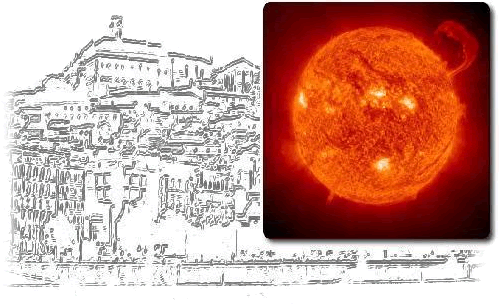|
|
|
|
|
|
|
|
|
|
|
|
|
Adam Kobelski, Mr. - PhD |
|
National Radio Astronomy Observatory, Green Bank, WV, USA |
|
|
|
|
|
|
|
Session 5 - Poster |
|
Solar Observations with the Atacama Large Millimeter/submillimeter Array (ALMA) |
|
The ALMA Solar Development Team: T. S. Bastian (NRAO), M. Bárta (Ondřejov), R. Brajša (Zagreb), B. Chen (CfA), B. De Pontieu (LMSAL),
G. Fleishman (NJIT), D. Gary (NJIT), A. Hales (NRAO), R. Hills (MRAO), H. Hudson (UCB), G. Hurford (UCB), K. Iwai (NAOJ), A. Kobelski (NRAO), S. Krucker (UCB), M. Shimojo (NAOJ),
I. Skokic (Zagreb), S. Wedemeyer (Oslo), S. White (AFRL), Y. Yan (CAS) |
|
|
|
The Atacama Large Millimeter/Submillimeter Array (ALMA) is a joint North
American, European, and East Asian project that opens the mm-sub mm wavelength part
of the electromagnetic spectrum for general astrophysical exploration, providing
high-resolution imaging in frequency bands currently ranging from 84 GHz to 950 GHz
(300 microns to 3 mm). Despite being a general purpose instrument, provisions have
been made to enable solar observations with ALMA. Radiation emitted at ALMA
wavelengths originates mostly from the chromosphere, which plays an important role
in the transport of matter and energy, and the in heating the outer layers of the
solar atmosphere. Despite decades of research, the solar chromosphere remains a
significant challenge: both to observe, owing to the complicated formation
mechanisms of currently available diagnostics; and to understand, as a result of the
complex nature of the structure and dynamics of the chromosphere. ALMA has the
potential to change the scene substantially as it serves as a nearly linear thermometer at high
spatial and temporal resolution, enabling us to study the complex interaction of
magnetic fields and shock waves and yet-to-be-discovered dynamical processes.
Moreover, ALMA will play an important role in the study of energetic emissions
associated with solar flares at sub-THz frequencies.
In this paper we describe recent efforts to ensure that ALMA can be usefully
exploited by the scientific community to address outstanding questions in solar
physics. We summarize activities by the ALMA solar development team comprised of
scientists from the East Asia, North America, and Europe. These activities include
instrument testing, development of calibration and imaging strategies, software
requirements development, and science simulations. Opportunities for the wider
community to contribute to these efforts will be highlighted. |
|
|
|
|
|
|
|




 









 |



